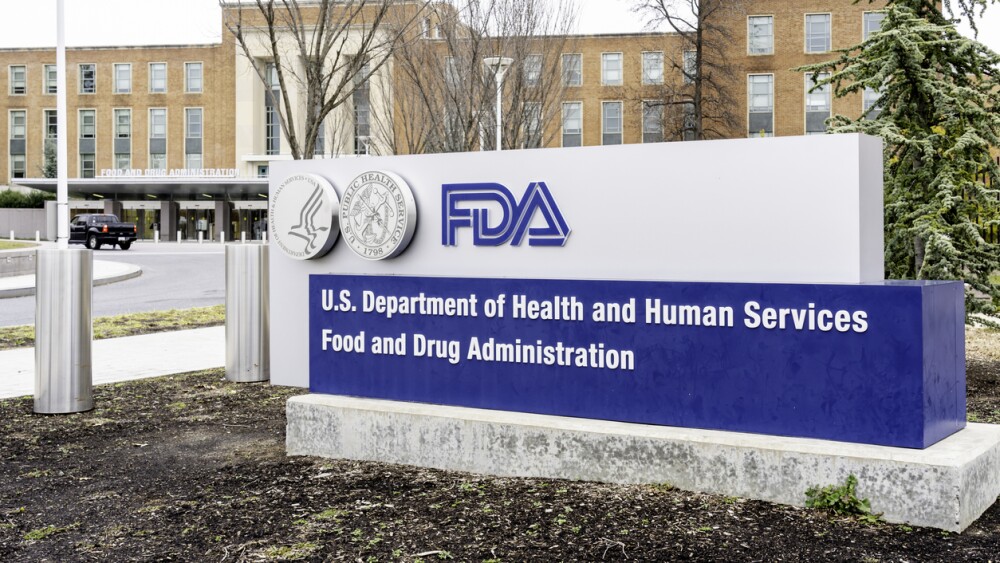Despite announcing a broad pivot to siRNA earlier this year, Sarepta is following through with an investigational gene therapy: its limb-girdle muscular dystrophy candidate. But the treatment’s path forward, analysts say, is highly uncertain.
In July, Sarepta Therapeutics was forced to make an existential pivot: after making a name for itself in the field of gene therapies, the company announced it will continue on primarily as an siRNA-focused biotech.
By that point, Sarepta’s stocks had been battered for months. Its flagship product, the Duchenne muscular dystrophy gene therapy Elevidys, had been linked to two deaths—one in March and another in June—both after the patients suffered severe acute liver failure. Before unveiling its business overhaul on Jul. 16, Sarepta’s shares had crashed 85% since the start of the year.
After a third patient death—linked to SRP-9004, an investigational gene therapy for limb-girdle muscular dystrophy (LGMD) developed on the same platform as Elevidys—the FDA paused several clinical trials and asked Sarepta to pause all shipments of Elevidys, a request to which the company ultimately relented.
While Elevidys is now back on the market for ambulatory patients, Sarepta remains under pressure. The company has pledged to sustain support for its gene therapies on the market, Elevidys among them, Louise Rodino-Klapac, vice president of R&D and technical operations at Sarepta, told BioSpace in an email. Still, the pivot to siRNA was seen by investors as a way to chart a fresh, cooler course for its business and leave its gene therapy baggage behind—except for one program.
A Strong Rationale
At the 30th annual International Congress of the World Muscle Society (WMS), held last week in Vienna, Austria, Sarepta presented late-stage data that not only validate the clinical value of SRP-9003’s mechanism, but also support the company’s decision to take it forward, according to analysts that BioSpace spoke to for this piece.
The Phase III EMERGENE study dosed a total of 17 patients with LGMD and observed them for 60 days to assess changes in beta-sarcoglycan expression. Results showed that SRP-9003 hit its primary endpoint. In non-ambulatory patients, the gene therapy resulted in a 23.9% average increase in expression of the beta-sarcoglycan protein, a biomarker associated with the structure and function of muscles. In those able to walk, protein expression rose by 43.4%.
Heading into WMS, safety was a major watch point for SRP-9003, given the spate of patient deaths earlier in the year. On that front, Sarepta appeared to deliver: While more than 40% of patients experienced adverse events indicative of acute liver injury, none were deemed related to SRP-9003.
For Uy Ear, vice president of U.S. Healthcare–Biotechnology at Mizuho Securities, these data provide strong rationale for Sarepta’s decision to keep SRP-9003 alive. “I don’t think they’d continue if the NPV [net present value] analysis wasn’t positive,” Ear told BioSpace in an email. “The decision to cease development of the other limb-girdle subgroups was based on their risk-adjusted NPV analysis.”
What also sets SRP-9003 apart from Sarepta’s other LGMD programs is that it is nearest to the market, Andy Chen, senior analyst at Wolfe Research, told BioSpace in an email. “They are likely going forward with 9003 over the others because it is the closest to commercialization.”
After all, Sarepta at this point has “likely” pumped millions into the development of SRP-9003, he added, “so why not try to make the final push to commercialize?”
In December 2024—months before the first Elevidys death surfaced—Sarepta had already laid out a regulatory roadmap for SRP-9003, with plans to file a biologics license application by the end of this year.
But beyond the business considerations, Sarepta is also looking to do good by its patient community, in particular those with a severe subtype called LGMD 2E, which stems from genetic mutations that disable the beta-sarcoglycan protein.
SRP-9003 is based on a full-length copy of the beta-sarcoglycan gene, engineered to ensure robust expression of the corresponding protein. According to Ear, the biotech has previously “indicated that they want to continue with the 2E subgroup largely because they feel a duty to these patients to continue.”
This community-centered philosophy to drug development has certain advantages for Sarepta, too, Jefferies analyst Andrew Tsai told BioSpace by email. “We have seen SRPT build strong community support for its products,” he said. In turn, this community has helped make the company’s assets “relatively resilient to regulatory pressure during times of benefit/risk uncertainty.”
And regulatory pressure is exactly what SRP-9003 is under. After the three confirmed deaths tied to its platform, the FDA in July placed a clinical hold on all of Sarepta’s gene therapy programs for LGMD, arguing that “study participants are or would be exposed to an unreasonable and significant risk of illness or injury.”
The regulatory pause on SRP-9003’s clinical development remains as of this publication. When asked how Sarepta plans to make the case for removing the hold, Rodino-Klapac did not provide details.
“Sarepta’s immediate focus for SRP-9003 is to complete the necessary regulatory interactions and submit a BLA as soon as possible, pending the outcome of discussions with FDA,” she said.
Regulatory Risks Remain
In June, the FDA awarded Sarepta the first ever Platform Technology Designation for a viral vector, which would have streamlined the review process for SRP-9003. After the third patient death this summer, however, the FDA revoked the approval.
Combined with the clinical pause and general safety concerns, analysts see regulatory risk as a considerable roadblock for SRP-9003. According to Tsai, Jefferies had previously given the gene therapy 75% a probability of success rating, but this has since “declined after the FDA dynamics.”
Wolfe’s Chen was much more direct. “We assign no value to 9003 in our model given extreme FDA uncertainty,” he said.
And even if Sarepta manages to shake off the regulatory pause, an approval still is not guaranteed. “Our view is that the new FDA has little tolerance for shaky data,” Chen added. He offered as examples other recent rejections, such as Capricor’s deramiocel and Replimune’s RP1, both of which failed because of insufficient clinical evidence for approval.
In addition, SRP-9003 “uses the same viral vector technology to 9004 . . . which could prompt the FDA to request more data from 9003 before they are comfortable with approval,” Chen said.
Still, not all is hopeless for SRP-9003.
Following the second Elevidys patient death in June, Sarepta rolled out a number of safety initiatives. One proposal is to put patients through a prophylactic regimen based on the immunosuppressant sirolimus, which could help prevent liver damage that would otherwise result in organ failure and, ultimately, death.
At the WMS meeting, an independent abstract reviewed the safety benefit when sirolimus was added to Elevidys treatment. While the analysis was not statistically significant, analysts are hopeful that the sirolimus strategy could help make SRP-9003’s future a little bit brighter.
“We are curious if SRPT’s planned sirolimus study for Elevidys in non-ambulatory DMD patients could be useful to FDA in interpreting the label for ’9003,” Tsai said, however cautioning that there remains the possibility that the agency could ask for a “separate study” for SRP-9003.
Mizuho’s Ear shared Tsai’s optimism, saying, “If they can show that this [sirolimus regimen] is effective, they can make the same proposal to the FDA for 9003, as Elevidys and LGMD use the same AAV vector.”
That outcome would, of course, be ideal for Sarepta. While analysts haven’t yet arrived at a sales forecast for SRP-9003 after the safety shakeup, Ear anticipates that the gene therapy “should incrementally help with cash flow to further develop the pipeline.”






